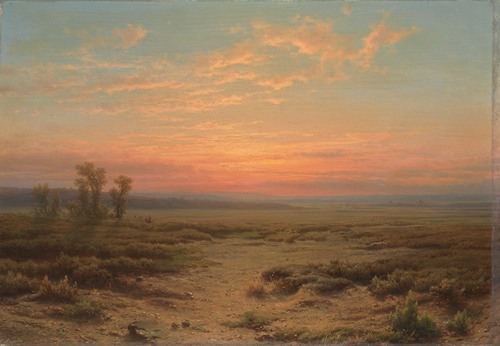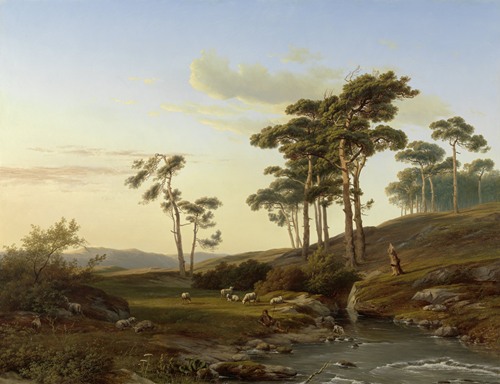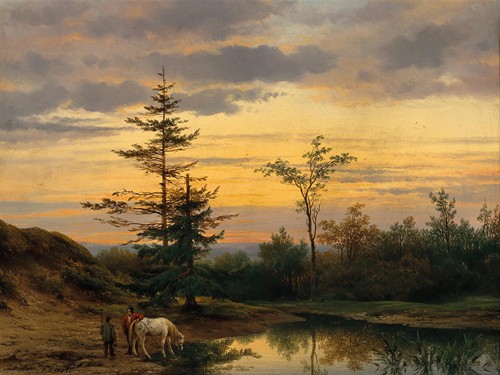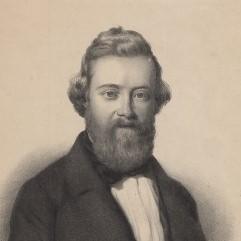




Cornelis Lieste was a Dutch painter and lithographer. He specialized in Romantic style landscapes.
In 1835, his father enrolled him at the Vocational School, where he studied drawing with Jan Reekers (1790-1858). From 1837 to 1838, he learned landscape painting from Nicolaas Johannes Roosenboom and, in 1839, won a silver medal at an exhibition in ’s-Hertogenbosch. This was followed by a study trip to Belgium and Germany. Many of his sketches were made in the dunes of North Holland. While travelling in Germany, he may have visited Kleve and studied briefly with Barend Cornelis Koekkoek.
In 1846, he was named a member of the artists' society, "Kunst Zij Ons Doel", and was given some administrative functions. Later that year, he was appointed a member of the Royal Academy of Art in Amsterdam. The following year, he became a Freemason and took a painting trip to the Harz mountains.
He was one of the artists who participated in decorating the "Parkzaal" at the Wertheimplantsoen [nl] during the celebration of Rembrandt's 400th birthday in 1852. He set off travelling again in 1853; visiting the Rhine region, Switzerland and North Italy; painting some of his few mountain landscapes. From 1854 to 1856, he was a regular guest at the artists' colony in Oosterbeek. Just before his death, he paid an extended visit to Twente and Drenthe, where he sketched the dolmens in addition to his usual landscapes.
In 1858, he married Johanna Cornelia Burman (1838-1887), but died two years later of an unspecified "chest disease"; leaving behind a two-year-old child, with another on the way.
Among his best known students, one may mention Hendrik Dirk Kruseman van Elten and Paul Gabriël. His works may be seen at the Rijksmuseum, the Amsterdam Museum, the Teylers Museum, the Museum Boijmans Van Beuningen and the Stedelijk Museum Zwolle


